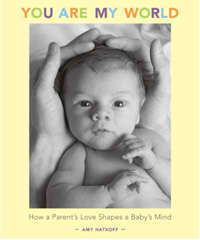By Kelly Bartlett, author of Encouraging Words For Kids, certified positive discipline educator and Attachment Parenting International Leader (API of Portland, Oregon, USA), www.kellybartlett.net
Having a new baby is an exciting time. Even the older siblings will feel this excitement and will be delighted to hold their new baby brother or sister for the first time. They finally get to see who has been inside of mom’s growing belly all these months!
That excitement may fade, though, as the weeks go on and the reality of a baby’s needs sets in. Many parents see changes in behavior in their older children sometime during the first year after a new sibling is born. Children may act out, become defiant or begin to show behavior struggles at school. This is normal, since a child’s natural growth compounded with the stress of adjusting to a new family member can be overwhelming. It can cause a child to think differently about himself and to behave differently as he tries to find his place in the family.
Parents frequently turn to books, friends, articles or classes to learn how to handle a child’s difficult behavior and to discipline appropriately. The first question a parent asks is, “What should I do?” They seek tools, techniques and strategies—a concrete approach to solving behavior problems. But what parents need to understand is that the tools are secondary to the relationship.
The relationship of the child to the parent is the foundation for all “good” behavior. Children inherently want to behave well for those to whom they are emotionally connected. Without a strong attachment relationship, there is no desire to be like, please, take direction from or otherwise follow a parent’s lead.
What this means for parents, in regard to getting through our kids’ difficult phases of behavior, is that we must focus on connecting to them—checking in on our relationship and doing any work to build a closer, stronger relationship—before we focus on what tools to use. It needs to be ongoing, and it needs to be the first thing considered when responding to a behavioral situation. Before asking, “What should I do?” we need to ask, “How is our relationship? Am I emotionally available? Does my child feel connected to me?” When we address the relationship first, those answers to “What should I do?” fall into place much easier.
Though it can be difficult with a new baby in the house, it is critical to focus on maintaining a supportive and responsive relationship with older siblings. This is the key to helping them adjust to big changes. With their burgeoning autonomy, older children’s needs are less about physical connection, such as holding, nursing, or co-sleeping, and more about emotional bonding and understanding. Children need to know that they still matter, that they will always belong and that they have an important place in their parents’ hearts. Here are 11 ways to build connection and communicate to kids that they are valued in the family, after the birth of a new sibling or anytime.
1. Listen. This might be the most effective way to strengthen connection with a child. Listening leads to understanding, which strengthens attachment. Whatever kids communicate, make sure you hear them out without interrupting, making assumptions or giving them answers. Even when there are angry actions or loud tears present, prove that you understand their message by repeating it and reflecting their feelings about it. “You are mad! You are feeling very angry that you can’t do what you want right now.” Children will listen after they feel listened to. Don’t try to fix the problem or provide solutions. Just listen, validate and accept. Empathy communicates understanding, and children who feel understood feel safe and loved.
2. Do “special time.” Dedicate uninterrupted time with your older children every day. This will go a long way toward supporting their secure attachment with you. You get to know them, and they get to feel known.
3. Show faith. Have confidence in kids to make their own decisions, fix their own mistakes and accomplish their own goals. Your faith in your children generates confidence in them and a trust in your relationship.
4. Allow mistakes. By allowing and accepting mistakes, instead of yelling or criticizing, you are facilitating trust. There are fantastic opportunities for bonding and learning together, when you let your child know it’s OK to make mistakes and you are going to help her succeed.
5. Hug. Not just hugs, but any kind of positive physical touch helps connect parents and kids. Every touch, pat, massage, hair stroke, squeeze, handhold or full-body bear hug is a physical reminder to a child that says, “I love you and I’m here—right here—for you.” Do this often.
6. Use encouragement, not praise. Focus on acknowledging your child’s efforts rather than judging the outcome of his actions. It shows him that you value who he is internally, rather than simply what he can do or give you. There’s a very different message communicated in, “I noticed you got all our things ready to go! You really remembered a lot,” than in saying, “You’re such a good boy.”
7. Connect eye-to-eye. Get down to a child’s level to speak to her. It is respectful of her development and shows that you value even this most basic level of connection.
8. Empower. Sharing control with kids—as opposed to trying to have control over them—helps them develop their own skills and confidence. It lets them know that you trust their judgment and allows them to exercise their autonomy. One way to empower children is by giving them new responsibilities and opportunities to contribute to the family. You can also empower them by asking, “What ideas do you have for solving this problem? What do you think we should do?” and telling them, “I’m confident you’ll find a solution that works.” Depending on the situation and the child’s age, the parent may need to help generate solutions.
9. Appreciate. Letting kids know what we appreciate about them or their actions helps bring us closer together. “I appreciate you letting your sister play with that toy this morning. I know it’s yours, but she really enjoyed it. Thank you for sharing it!” Children feel a sense of significance and belonging when we recognize their helpful gestures and good deeds.
10. Recover. Recovering from our own mistakes is important for letting kids know that we do want to be the best parents we can for them. What better way to tell your kids how important their feelings are to you than with a heartfelt apology for a mistake and an offer to work on a cooperative, respectful solution? This can be one of the most effective ways to connect with your kids.
11. Foster. You can model and teach listening, empathy and respect to the eldest child to strengthen his connection to the infant, which will help with the transition of adding a new person to the family. As the children grow older, engage in shared activities and dialogue that foster a respectful and warm relationship with each other.
Keeping all of these ideas in mind, remember that every child will respond differently to the presence of a new sibling in the family. It is not always a fairy tale! Even the most securely attached children will feel a disruption in the family balance and may act out that disruption through their behavior. Consider your child’s individual temperament and unique needs to find a combination of connective parenting tools that work for your family. Instead of asking, “What should I do?” ask, “How can we connect?” It is this connection that will guide you through the transition of helping older children adjust to a new family dynamic. It is this connection that tells children, “You matter. You have an important place in this family, and you have an important place in my heart.”









